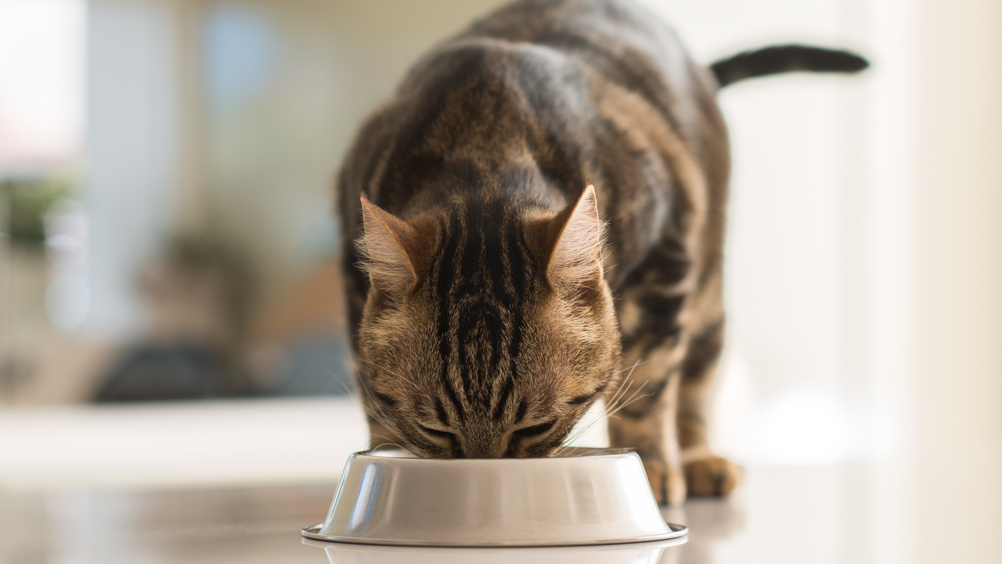
Clinical Nutrition Insights for Managing CKD in Pets
Chronic Kidney Disease (CKD) has quietly become one of the most frequently diagnosed chronic conditions among aging dogs and cats in India. Affecting nearly 1 in 5 senior pets, this progressive and irreversible disease continues to pose diagnostic and therapeutic challenges for veterinarians. While pharmacological interventions often take center stage, nutritional therapy remains one of the most underutilized yet critical tools in managing CKD—especially in the Indian clinical setting.
This article delves into practical, evidence-backed nutritional strategies for CKD management in pets, drawing on Indian clinical data, feeding habits, and local challenges.
Understanding the CKD Puzzle: Why Nutrition Matters
CKD is marked by a slow, irreversible decline in kidney function, leading to reduced glomerular filtration rate (GFR), accumulation of nitrogenous waste, electrolyte imbalances, and systemic complications such as hypertension and metabolic acidosis. Nutrition plays a pivotal role in mitigating these effects by:
- Reducing phosphorus and protein load
- Correcting acid-base and electrolyte imbalances
- Providing antioxidants and omega-3 fatty acids to curb inflammation
- Maintaining muscle mass and caloric intake
Yet in India, despite improving diagnostic rates, nutritional intervention often lags behind.
CKD in Indian Pets: What the Numbers Say
A 2021 study by Tamil Nadu Veterinary and Animal Sciences University (TANUVAS) reported that 18.6% of senior dogs and 22.3% of senior cats screened in urban veterinary clinics were diagnosed with CKD (Kumar et al., 2021). Startlingly, over 40% of these pets were still being fed home-cooked or high-protein commercial diets, which contradicts renal nutritional goals.
Further compounding the issue, a 2022 multicentric study in North India found that only 27% of veterinarians prescribed renal-specific diets in Stage 2 CKD (Singh et al., 2022). Key barriers cited were:
- Limited availability of renal diets
- High cost of commercial renal products
- Lack of owner compliance due to taste and food transition concerns
Key Nutritional Strategies for CKD Management
1. Protein Management
Moderation—not restriction—is the mantra. While high-protein diets accelerate uremia, excessive protein restriction can lead to muscle wasting. Renal diets generally aim for 14–20% crude protein (DM basis) versus 25–30% in standard diets.
In Indian home-cooked diets, egg whites, paneer, and lean chicken can be cautiously used under veterinary supervision. Each pet’s body condition score and serum creatinine/BUN should guide dietary protein levels.
2. Phosphorus Restriction
High phosphorus contributes to renal secondary hyperparathyroidism, hastening disease progression. The target dietary range is 0.3–0.6% phosphorus (DM) (Polzin, 2013). While commercial renal diets in India stay under 0.4%, home-cooked plans must avoid phosphorus-rich foods like organ meats, fish, and bone broth.
3. Sodium and Potassium Balancing
In hypertensive patients, sodium intake should be restricted to 0.2–0.3%. Meanwhile, hypokalemia is common in CKD cats, warranting potassium-rich foods or supplements.
4. Acid-Base Correction and Fiber Use
Later stages of CKD often bring metabolic acidosis. Supplementation with sodium bicarbonate or potassium citrate helps maintain bicarbonate levels above 18 mmol/L.
Fiber, particularly soluble types like psyllium husk, may help reduce nitrogen load via colonic nitrogen trapping—a concept gaining ground in custom diets.
5. Omega-3 Fatty Acids and Antioxidants
Omega-3s from fish oil have been shown to reduce glomerular hypertension and proteinuria. Antioxidants like Vitamin E and C can mitigate oxidative stress, further preserving renal tissue integrity.
Owner Compliance: The Indian Reality
Cost sensitivity and ingrained home-feeding habits pose major hurdles to nutritional compliance. Transitioning to prescription diets often fails due to palatability issues or sticker shock.
Successful strategies include:
- Gradual mixing of renal diet with current food over 10–14 days
- Providing printed handouts explaining the role of diet in kidney function
- Offering meal planners for affordable, home-cooked renal recipes
- Scheduling regular follow-ups to monitor food acceptance, weight, and biochemical values
Conclusion: Nutrition as a Cornerstone, Not an Afterthought
With rising CKD prevalence and improved early detection, the time is ripe for veterinarians in India to champion nutritional therapy as a primary pillar of CKD management. Initiating renal diets as early as IRIS Stage 2, tailoring them to individual needs, and empowering pet parents with education can profoundly impact prognosis.
In the words of Dr. D.J. Polzin, “Nutritional management may be the most important treatment for chronic kidney disease.” Indian practitioners now have both the data and the tools to act accordingly.
References
- Kumar R. et al. (2021). Prevalence of Chronic Kidney Disease in Aged Pets in Tamil Nadu. Indian Vet J, 98(9): 15–19.
- Singh P. et al. (2022). A Cross-sectional Study on Nutritional Practices in CKD Pets in North India. Journal of Vet Clinical Practice, 14(3): 78–83.
- Polzin D.J. (2013). Chronic Kidney Disease in Small Animals: Pathophysiology and Nutritional Management. Vet Clinics of North America: Small Animal Practice, 43(6): 1193–1210.
Related Content
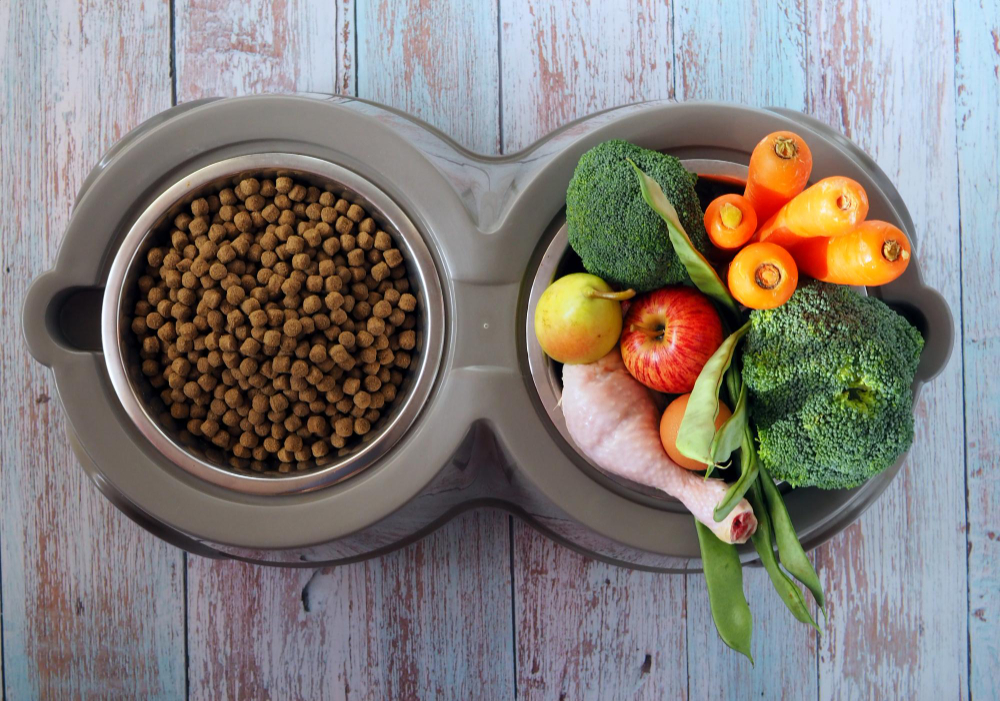
Kibble or Kitchen? Navigating the Homemade vs Commercial Diet Debate in Indian Veterinary Practice
Pet nutrition is rapidly becoming a central concern for Indian pet parents—and with that comes the inevitable question: homemade or commercial? For veterinarians across India, this question is more than just a dietary preference. It's a daily conversation at the clinic, a balancing act of science, safety, practicality, and cultural norms. In a country where home-cooked meals are symbols of love and care, advising on pet nutrition requires both clinical precision and cultural empathy. Nutritional Balance: Where Homemade Often Falls Short The single most critical concern with homemade diets is nutritional imbalance. While chicken, rice, and vegetables may seem wholesome, they often miss the mark on vital micronutrients. According to a study by TANUVAS, 72% of homemade pet meals were found deficient in calcium, and 68% lacked adequate vitamin D—both essential for bone development and immune health, especially in puppies and senior dogs [1]. These deficiencies can quietly undermine a pet’s health over time. Conversely, commercial diets—especially those adhering to AAFCO or FEDIAF standards—offer consistency and completeness. A 2021 analysis from Bombay Veterinary College reported that 80% of Indian dry dog food brands studied met recommended nutritional profiles for both adult maintenance and puppy growth [2]. However, not all kibble is created equal. Lower-end brands often compromise with poor-quality fillers and animal by-products, emphasizing the need for vet-led brand guidance. Digestibility and the Hidden Gains Clinical experience in Indian veterinary practice reveals noticeable improvements in coat quality, stool consistency, and energy levels when pets are switched from generic home-cooked meals to well-balanced commercial kibble. This observation isn’t just anecdotal. A study from Kerala found that commercial pet foods had a protein digestibility rate of 92%, while homemade chicken-rice diets lagged behind at 79% [3]. This disparity highlights the role of food processing, ingredient quality, and nutrient bioavailability. Hygiene and Safety: The Silent Risk at Home Food safety in Indian households is an often-overlooked issue. Reheating food, storing cooked meals at room temperature, or using leftovers is common. However, a survey from Karnataka revealed that 31% of sampled homemade diets were contaminated with Salmonella—a risk factor for both pets and their human companions [1]. On the other hand, commercial diets, especially dry kibble, undergo thermal processing and microbial checks, significantly lowering contamination risk when handled properly. Therapeutic Use: When Homemade Has an Edge Despite its shortcomings, homemade food has a crucial role—especially in managing medical conditions. For pets with chronic kidney disease, pancreatitis, or food sensitivities, a personalized, homemade diet can be a game changer. Unfortunately, access to veterinary nutritionists in India remains uneven. Many Tier 2 and Tier 3 cities lack trained professionals, forcing vets to remotely assist with formulation. In such scenarios, therapeutic commercial diets offer a practical interim solution—though affordability remains a barrier for some families. Owner Compliance: Where Convenience Wins A key factor influencing dietary success is owner compliance. Commercial pet foods come with clear feeding instructions, long shelf life, and easy portion control—all of which improve adherence. In contrast, preparing balanced homemade meals requires time, effort, and an understanding of supplementation—tasks that many pet parents, especially urban professionals, struggle to maintain consistently. Conclusion: Bridging the Gap with Practical Advice Ultimately, the answer isn’t binary. Commercial diets provide convenience, safety, and nutritional assurance—making them ideal for the average pet household. But when executed with veterinary guidance, homemade diets can offer powerful customization and care, especially in therapeutic contexts. Indian veterinarians must embrace a tailored approach—balancing science, safety, lifestyle, and client capability—to help pet parents make informed choices that support long-term pet health. References Raghavan R, et al. (2022). Evaluation of Homemade Pet Food Practices in South India. Indian Journal of Veterinary Nutrition, 39(3): 185–192. Deshmukh A, Kulkarni S. (2021). Comparative Analysis of Commercial Pet Foods in the Indian Market. Journal of Animal Nutrition and Feed Technology, 21(4): 326–333. Pillai R, et al. (2020). Digestibility Study of Homemade vs Commercial Diets in Dogs. Veterinary World, 13(5): 950–955.
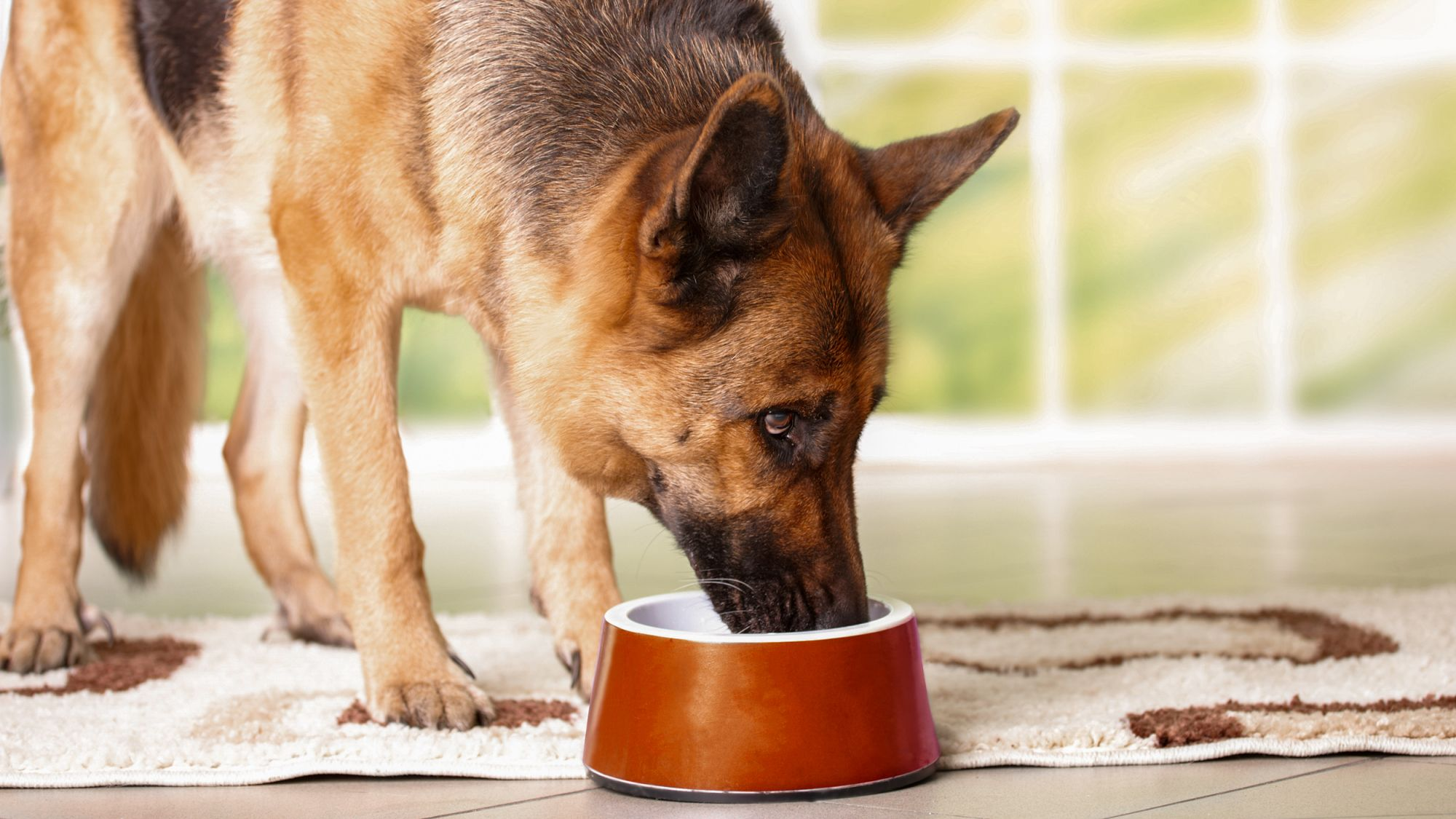
Why Life Stage Nutrition Matters More Than Ever for Dogs
In veterinary practice across India, one common mistake stands out—feeding dogs the same diet throughout their lives. Whether it's a boisterous puppy or a slow-moving senior, many pet parents stick to one-size-fits-all feeding routines. While this may seem convenient, it can have lasting consequences on a dog’s health and longevity. With India’s pet population projected to surpass 31 million by 2025, and an increasing number of urban households adopting dogs, veterinarians are in a unique position to influence pet health outcomes. One of the most powerful tools? Life stage-specific nutrition. Puppyhood: Fueling Growth and Development Puppies grow at a remarkable pace—developing muscles, bones, organs, and neural connections. This rapid growth demands a high-calorie, protein-rich diet tailored to their specific breed and size. Veterinary guidelines recommend: Protein: 22–32% Fats: 10–25% DHA: For brain and vision development Balanced Calcium:Phosphorus ratio: Prevents skeletal abnormalities Overfeeding, especially in large breeds, can lead to joint disorders like hip dysplasia. Conversely, undernutrition is a pressing issue. According to a 2022 study by the Indian Veterinary Research Institute (IVRI), nearly 40% of puppies in semi-urban India exhibited signs of rickets or stunted growth due to inappropriate diets like diluted cow’s milk or carbohydrate-heavy meals. Structured feeding—3–4 times a day in small portions—is key. Breed-specific puppy formulas or home-cooked meals designed by veterinarians ensure that the building blocks for lifelong health are firmly in place. Adulthood: The Balancing Act By 12–18 months, most dogs transition into adulthood. Here, the nutritional focus shifts from growth to maintenance, disease prevention, and lifestyle alignment. Adult dogs typically need: Protein: 18–25% Moderate fats Adequate fiber for digestive health However, needs vary. A Labrador Retriever with daily outdoor exercise requires a very different caloric intake than a couch-loving Pomeranian. An alarming 2023 survey by the Bengaluru Pet Welfare Society revealed that 35% of adult dogs in urban areas were overweight—primarily due to excess table scraps and high-carb diets. Obesity significantly increases the risk of diabetes, joint issues, and heart disease. Veterinarians should guide pet parents on Body Condition Scoring (BCS) and discourage free-feeding. For those opting for home-prepared meals, a balanced mix of chicken, rice, vegetables, and vet-approved supplements can be effective—if carefully formulated. Senior Years: Nourishing Gracefully Dogs are considered senior by age 7—earlier for larger breeds. Aging brings reduced metabolism, muscle loss, and declining kidney, liver, and cognitive function. Key nutritional adjustments for seniors include: Lower calories to prevent weight gain High-fiber for digestion Easily digestible protein to support muscle without straining organs Glucosamine & Chondroitin for joints Omega-3s, Vitamin E, Selenium for cognitive health A 2022 study by TANUVAS found that 68% of senior Indian dogs had early arthritis, while 40% showed cognitive decline—both improved significantly with antioxidant-rich diets and fish oil. Softened kibble or wet food often works best for older dogs dealing with dental issues. Custom senior diets can slow disease progression and improve quality of life. The Vet’s Role: Translating Science into Culture In India, dietary traditions like feeding rotis with milk or plain rice with curd are still common. While well-intentioned, such practices rarely meet the nutritional needs of dogs at any life stage. Veterinarians can bridge this gap with non-judgmental education. By respecting cultural preferences while introducing easy nutritional tweaks—like adding pumpkin, paneer, eggs, or vet-recommended multivitamins—we can make science practical. Community workshops, social media education, and personalized diet counselling are powerful ways to shift mindsets and improve outcomes. Final Thoughts: Nutrition as Preventive Medicine Life stage nutrition isn’t just a diet strategy—it’s a preventive health plan. As India’s pet population grows, veterinarians must lead the charge in promoting evidence-based, stage-appropriate feeding practices. Because the right food—given at the right time—can mean the difference between a life that’s merely lived, and one that’s lived well. References Indian Veterinary Research Institute (IVRI) & Tamil Nadu Veterinary and Animal Sciences University (TANUVAS). Reports on Canine Nutrition and Health Trends. 2021–2023. Bengaluru Pet Welfare Society. Urban Pet Care and Obesity Trends in India. Survey Report, 2023.
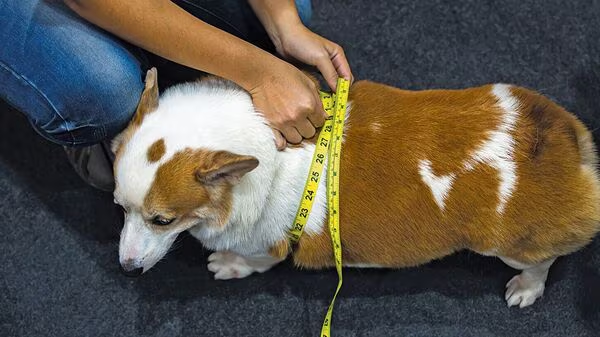
A Vet’s Guide to Managing Pet Obesity in India
In recent years, a growing concern has quietly padded into vet clinics across India’s metros—overweight and obese pets. From Mumbai’s high-rises to Delhi’s apartment complexes, veterinarians are witnessing a surge in pets tipping the scale. It’s not just about the chubby charm; it’s a full-blown health crisis that demands clinical strategy and compassionate client communication. Obesity in pets is now one of the most common nutritional disorders seen in urban practices. A 2023 report by the Pet Obesity Research Group India (PORGI) revealed that nearly 35% of pet dogs in major Indian cities are either overweight or obese. Among breeds, Labradors, Pugs, and Persian cats were disproportionately affected—thanks to their genetic predisposition and sedentary lifestyles. Even more concerning, over 40% of pet parents didn’t realize their pet was overweight, pointing to a critical gap in awareness and education (1). What’s Causing the Weight Gain? Urban living, while comfortable, isn’t ideal for most pets’ physical needs. The culprits are familiar: Limited physical activity due to indoor confinement Calorie-rich commercial pet foods and overfeeding Frequent treats and table scraps Free-feeding and poor portion control The 2022 Indian Veterinary Association Urban Pet Survey further highlighted that 62% of pet owners in cities tend to offer human food regularly, while only 18% measure their pet’s food portions (2). A Dietary Roadmap for Vets Veterinarians play a pivotal role in diagnosing and managing obesity. The journey often begins with a Body Condition Score (BCS) evaluation—an excellent visual and tactile tool to help pet parents understand where their furry companions stand on the health spectrum. Here’s a framework many practitioners are successfully adopting: 1. Focus on Caloric Deficit, Not Deprivation A healthy weight loss rate is about 1–2% of body weight per week. Anything more aggressive risks muscle loss and nutrient deficiencies. Use energy requirement calculators to guide daily intake adjustments. 2. Leverage Prescription Diets Veterinary-grade weight-loss diets are formulated to be high in protein and fiber while being low in fat and calories. They support satiety and reduce begging behaviors—key to sustainable results. 3. Support for Home-Cooked Preferences In India, many pet parents prefer home food. This is viable when guided. Advising low-carb, high-fiber, lean-protein diets—with supplements like calcium or multivitamins—can help maintain balance without compromising on familiarity. 4. Treat Smarter Treats should not exceed 10% of daily calorie intake. Recommend healthier alternatives such as carrot sticks, boiled pumpkin, or low-calorie commercial treats instead of biscuits or leftovers. 5. Promote Measured, Scheduled Feeding Ditching free-feeding in favor of measured portions, ideally using a digital kitchen scale, ensures consistency. Fixed mealtimes also aid metabolism and digestion. The Power of Communication Addressing obesity can be delicate. Many clients perceive a chubby pet as well-loved and well-fed. Thus, the success of any intervention hinges on empathetic and constructive dialogue. ✔ Be Kind, Not Critical Frame weight as a health concern, not a failure of care. ✔ Share Stories, Not Just Stats Use case examples of pets who improved mobility, reduced joint issues, or simply had more energy after weight loss. ✔ Celebrate Small Wins Encourage monthly weigh-ins and cheer even a 500-gram drop—especially in smaller breeds. ✔ Recommend Activity Tailored to Lifestyle A 10-minute extra walk, interactive toys, or food puzzles can go a long way. For older or arthritic pets, suggest canine hydrotherapy or physiotherapy, if accessible. Conclusion: A Collective Effort Pet obesity isn’t a cosmetic issue—it’s a clinical one that shortens lifespan and affects quality of life. The good news? It’s preventable and manageable. Vets can bridge the gap between medical insight and pet parent action through informed, empathetic conversations and structured dietary plans. In a landscape where pets are increasingly seen as family, veterinarians have a powerful opportunity—not just to treat, but to educate, empower, and inspire healthier choices. One conversation, one meal, and one wag at a time. References: Pet Obesity Research Group India (PORGI). (2023). Trends in Canine and Feline Obesity in Metro Cities. Indian Veterinary Association. (2022). Urban Pet Survey: Feeding Habits, Activity Levels, and Owner Awareness.
“Just Ageing” or Early Osteoarthritis? Detecting the First Signs in Dogs
Osteoarthritis (OA) is one of the most prevalent chronic conditions affecting the canine population, with studies estimating radiographic evidence in up to 80% of senior dogs over the age of eight (Johnston, 1997). However, in clinical practice, particularly in southeast asia, OA remains underdiagnosed in its early stages due to two persistent misconceptions: that joint stiffness is a normal consequence of ageing, and that pain is always obvious. Early signs of OA are often subtle and non-specific, including reluctance to jump into vehicles, lagging behind on walks, difficulty rising after rest, or increased irritability. These behavioural changes are commonly misattributed to “just getting old” by guardians. Yet, studies suggest that these early signs often precede radiographic changes (Moreau et al., 2014), meaning veterinarians must rely heavily on clinical history and pain assessment tools for diagnosis. Breed-specific prevalence adds a further diagnostic dimension. Large breeds such as Labrador Retrievers, German Shepherds, and Rottweilers, widely kept in Indian urban settings are disproportionately affected. Moreover, street-adopted Indian Pariah Dogs ("Indie dogs") often present with early OA due to prior trauma or poor nutrition in their formative months. Clinical assessment should extend beyond physical palpation. While joint thickening, crepitus, and pain on extension are critical findings, validated pain scoring tools like the Canine Brief Pain Inventory (CBPI) and the Liverpool Osteoarthritis in Dogs (LOAD) score can add significant diagnostic weight (Brown et al., 2008; Walton et al., 2013). These tools are not only free and easy to apply, but they also empower clients to recognize pain trends at home. Radiographs, although helpful, can mislead when used alone, especially in early OA. A dog with functional impairment may show minimal radiographic change, while another with significant joint pathology may show no clinical lameness. Thus, imaging should always be interpreted in conjunction with clinical findings and patient history. Treatment should begin early and follow a multimodal plan. NSAIDs like carprofen and firocoxib remain first-line choices, especially when inflammation is evident. Adjuncts such as omega-3 fatty acids (from fish oil), glucosamine, and chondroitin sulfate may provide long-term cartilage support, though evidence varies (Sanderson et al., 2009). Physiotherapy including underwater treadmill therapy and passive range-of-motion exercises is increasingly accessible in India and can be particularly beneficial when started before muscle atrophy sets in. Client education is essential. Veterinarians must emphasize that OA is not simply an “old dog problem” but a progressive, painful, and manageable disease. Guardians should be taught to monitor for changes in activity, sleeping habits, and response to touch especially in breeds at risk. References: Brown, D. C., et al. (2014). https://doi.org/10.1111/j.1532-950X.2014.12141.x Johnston, S. A. (1997). https://pubmed.ncbi.nlm.nih.gov/9243777 Moreau, M., et al. (2014). https://pubmed.ncbi.nlm.nih.gov/25311158 Sanderson, R. O., et al. (2009) . https://pubmed.ncbi.nlm.nih.gov/19346540/ Walton, M. B., et al. (2013). https://journals.plos.org/plosone/article?id=10.1371/journal.pone.0058125
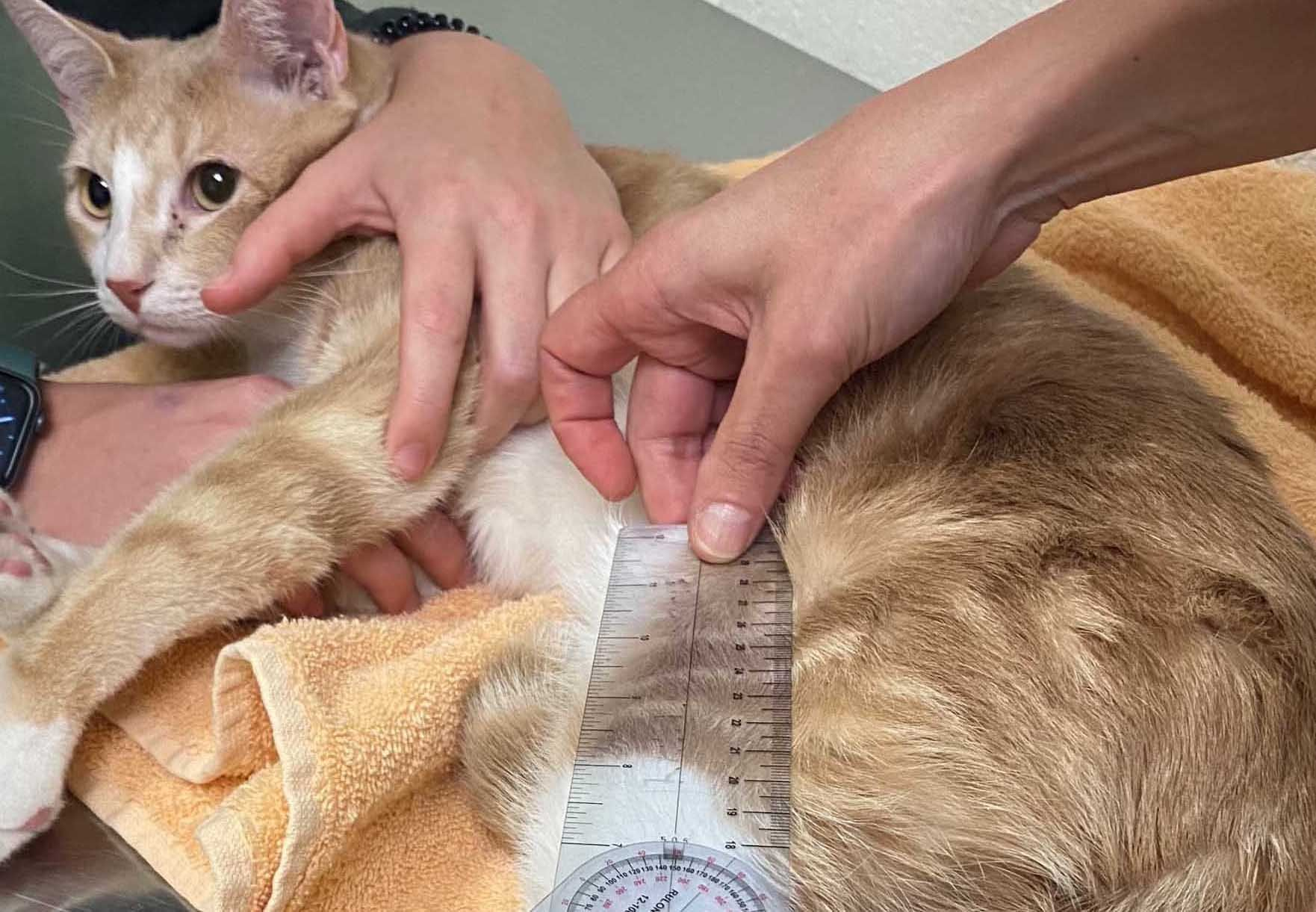
Feline OA is Real - How to Diagnose It Without Radiographs
Feline osteoarthritis (OA) is a widely under-recognized condition in clinical practice, particularly in India, where awareness about chronic pain in cats remains limited. Epidemiological studies suggest that up to 61% of cats over the age of six show radiographic signs of OA, with the number rising significantly in cats over 12 years (Lascelles et al., 2012). However, due to the subtlety of feline behaviour and their evolutionary predisposition to mask pain, clinical detection is challenging. Unlike dogs, cats with OA do not often exhibit overt lameness. Instead, veterinarians should look for reduced grooming, difficulty jumping onto furniture, reluctance to use the litter box, irritability, or social withdrawal. A validated owner questionnaire such as the Feline Musculoskeletal Pain Index (FMPI) or Client Specific Outcome Measures (CSOM) can provide valuable insight into mobility changes that may not be obvious during examination (Benito et al., 2013). Orthopaedic examination in cats can be complicated by their temperament, but careful palpation of the spine, hips, elbows, and stifles may reveal crepitus, joint thickening, or reduced range of motion. Radiographs can confirm OA but often underestimate the pain burden; cats with mild radiographic changes may have significant functional impairment. Management of feline OA should focus on pain control and environmental adaptation. Pharmacological options include meloxicam (off-label, at the lowest effective dose) and gabapentin, which provides analgesia and anxiolysis during handling. Non-drug approaches include padded bedding, easy-access litter trays, warm resting spots, and ramps to reduce jumping. Newer therapies such as frunevetmab, a feline anti-NGF monoclonal antibody, show promise in clinical trials (Enomoto et al., 2022), though availability in India is still emerging. Early recognition and a multimodal management strategy can greatly improve quality of life. Veterinary practitioners in India should prioritize feline OA in senior wellness exams, and educate guardians about behavioural pain signs. References: Lascelles BDX et al. (2012). https://pubmed.ncbi.nlm.nih.gov/20561321 Benito J et al. (2013). https://pubmed.ncbi.nlm.nih.gov/23369382 Enomoto M et al. (2022). https://pubmed.ncbi.nlm.nih.gov/30368458
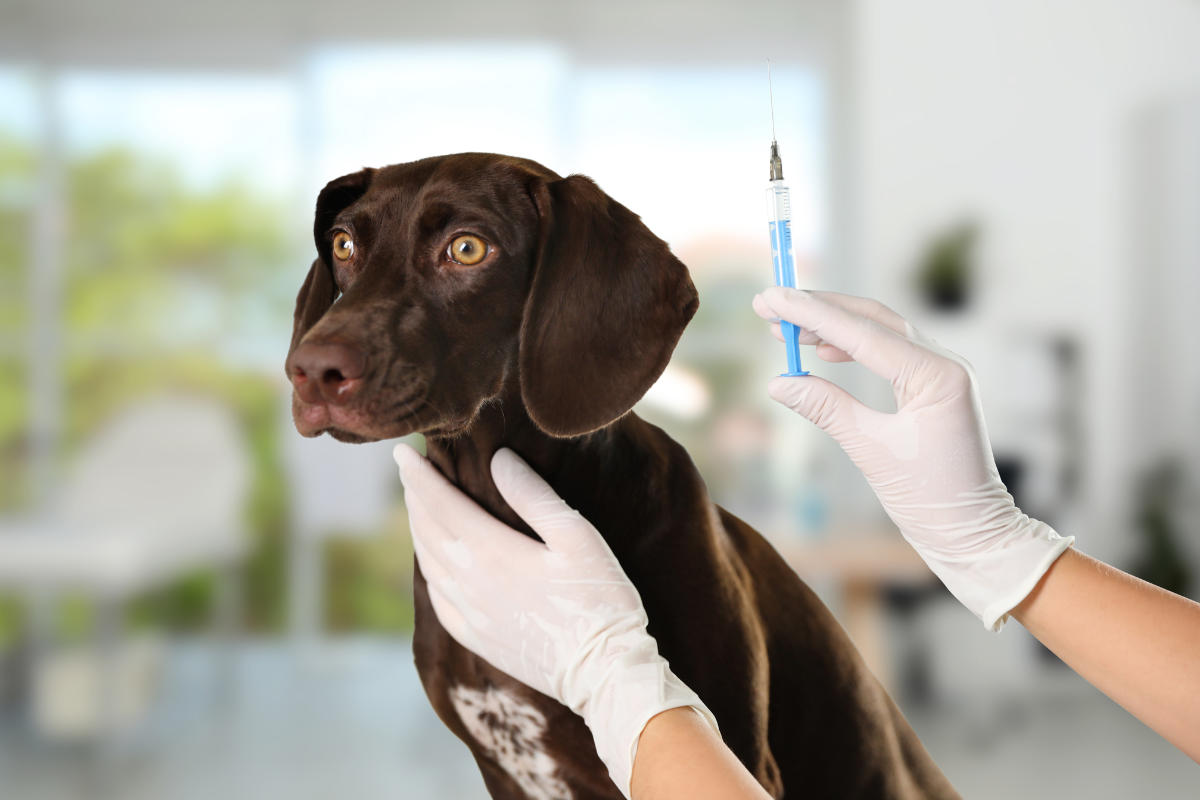
Injectable OA Treatments in Indian Practice - What Works, What’s Available
Injectable options for managing canine osteoarthritis (OA) have gained traction in India as veterinarians move toward multimodal and client-friendly protocols. These include anti- inflammatory agents, disease-modifying osteoarthritis drugs (DMOADs), and monoclonal antibodies each targeting different mechanisms of pain and cartilage degradation. One of the most advanced injectable therapies is bedinvetmab, a monoclonal antibody that inhibits nerve growth factor (NGF) - a critical mediator of chronic pain. In a randomized, placebo-controlled study, bedinvetmab showed statistically significant improvements in mobility and quality of life in dogs with OA (Innes et al., 2025). Administered monthly as a subcutaneous injection, it is particularly suitable for dogs with renal disease or NSAID intolerance. Though it has become available in India, pricing may limit widespread adoption. Non-steroidal anti-inflammatory drugs (NSAIDs) such as meloxicam , firocoxib , and carprofen remain the first-line injectable and oral treatment in most Indian practices. While effective in reducing inflammation and pain, they require renal and hepatic monitoring, especially in geriatric patients. Veterinarians also use pentosan polysulfate sodium, a DMOAD that enhances cartilage resilience and inhibits matrix metalloproteinases. Though off-label in India, anecdotal evidence and studies in Australia suggest it can be effective in slowing OA progression and improving joint function (Read et al., 1996). Adjuncts such as glucosamine sulfate , chondroitin sulfate , and MSM (methylsulfonylmethane) are commonly prescribed, though evidence for injectable efficacy remains limited. Combining these with omega-3 fatty acids or physical rehabilitation may enhance outcomes. Selection should be guided by clinical stage, client budget, and patient comorbidities. Injectable therapies provide an effective option when compliance with daily medication is difficult or when oral treatments are contraindicated. References: Innes et al. (2025). https://www.frontiersin.org/journals/veterinary- science/articles/10.3389/fvets.2025.1502218/full Read et al. (1996). https://pubmed.ncbi.nlm.nih.gov/8683953 Sanderson RO et al. (2009). https://pubmed.ncbi.nlm.nih.gov/19346540
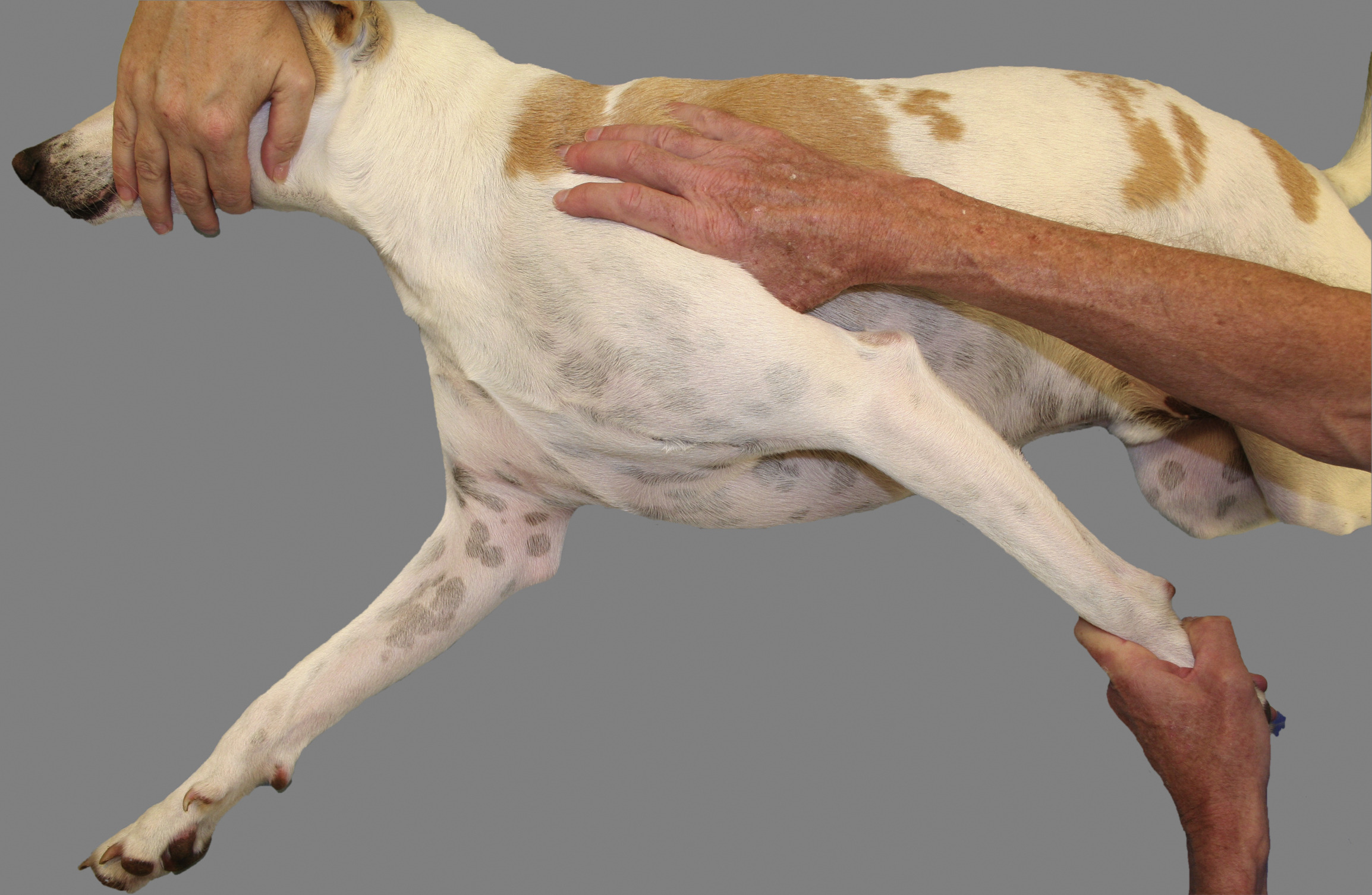
Hindlimb Lameness in Dogs - Differential Diagnosis & Field Management
Hindlimb lameness is a frequent presenting complaint in Indian veterinary clinics, especially among large-breed dogs. Accurate diagnosis and effective field management of this issue require a structured approach to differentiating common orthopedic conditions such as cranial cruciate ligament rupture (CCLR), hip dysplasia, patellar luxation, and musculoskeletal trauma. Cranial cruciate ligament rupture is the leading cause of hindlimb lameness in adult dogs. It is commonly seen in Labradors, German Shepherds, and Indian Indies. Dogs typically present with acute, non-weight-bearing lameness and stifle joint effusion. Key diagnostic tests include the cranial drawer and tibial thrust tests. Radiographs may reveal joint effusion and osteophytes in chronic cases (Duerr et al., 2016). Hip dysplasia, often bilateral and genetically predisposed, affects the coxofemoral joint and presents as bunny-hopping gait, difficulty rising, and muscle wasting. Diagnosis requires sedation and proper radiographic positioning (extended VD view). The Ortolani sign can be helpful in detecting hip laxity in young dogs. Patellar luxation, particularly medial luxation, is more common in small breeds but can be seen in medium-breed Indian dogs. Clinical signs include intermittent skipping lameness and reluctance to jump. Diagnosis is manual palpation often reveals spontaneous luxation during flexion (Innes et al., 2000). In field setups with limited imaging access, a tiered management approach is essential(Di Dona et al., 2018): Start with cage rest (5–7 days), cold compress, and NSAIDs (e.g., carprofen 4.4 mg/kg SID). Monitor response and re-evaluate lameness at day 7–10. Persistent or non-improving cases should be referred for orthopedic consultation and imaging. Rehabilitation exercises such as assisted walking, weight shifts, and underwater treadmill therapy improve recovery post-diagnosis or surgery. Owner education on exercise restriction, dietary control, and joint supplementation (e.g., omega-3s, glucosamine) is crucial to avoid recurrence. References: Duerr FM et al. (2016). https://pubmed.ncbi.nlm.nih.gov/25328024/ Innes JF & Bacon D. (2000). https://pubmed.ncbi.nlm.nih.gov/11058021 Di Dona, F., Della Valle, G., & Fatone, G. (2018). https://doi.org/10.2147/vmrr.s142545

One Prescription Away from Resistance: AMR Explained for Vets
Antimicrobial Resistance (AMR) is not just a theoretical problem; its effects are seen in daily veterinary cases. AMR develops when bacteria evolve to resist drugs, often due to inappropriate antibiotic usage. In India, drugs like enrofloxacin and ceftriaxone fall under Schedule H and H1 of the Indian Pharmacopoeia, indicating restricted prescription use due to their critical importance. In small animal practice, the common reliance on empirical treatments for conditions such as recurrent otitis, pyoderma, and urinary tract infections (UTIs), often without conducting culture tests, can contribute to the development of antibiotic resistance. Clinical Insight A Labrador retriever with chronic ear infection was unresponsive to fluoroquinolone therapy. Culture and sensitivity revealed Pseudomonas aeruginosa resistant to most available antimicrobials. Instances like these highlight the significant impact that resistance can have on the available treatment options, ultimately heightening the risk faced by patients. When bacteria or viruses develop resistance to commonly prescribed medications, healthcare providers find themselves with fewer effective tools at their disposal. This limitation can lead to longer illness durations, increased healthcare costs, and a greater likelihood of complications. As a result, patients may be exposed to less effective treatments or have to endure more aggressive therapies with serious side effects, placing their overall health in jeopardy. These scenarios underscore the critical need for ongoing research and development of new therapeutic strategies to combat resistant strains and ensure better outcomes for patients. Takeaway Prioritising diagnostics, adhering to proper dosing protocols, and rotating antimicrobials based on sensitivity profiles are crucial steps toward responsible veterinary stewardship. References: Indian Pharmacopoeia Commission, 2018 WHO. Global Action Plan on AMR, 2015 https://avmajournals.avma.org/view/journals/javma/228/4/javma.228.4.553.xml?tab_body=fulltext